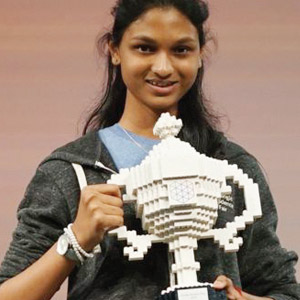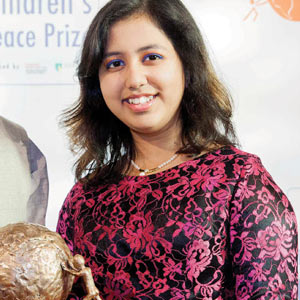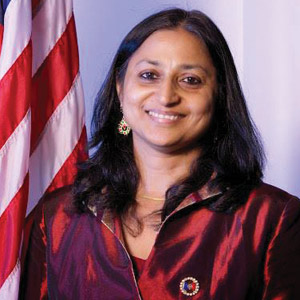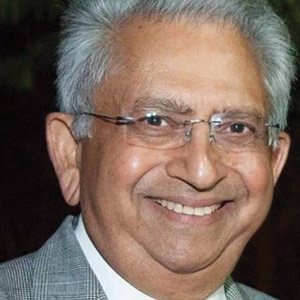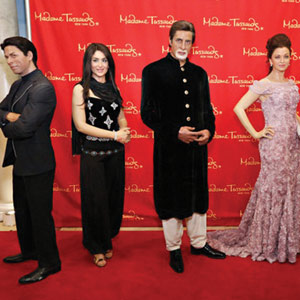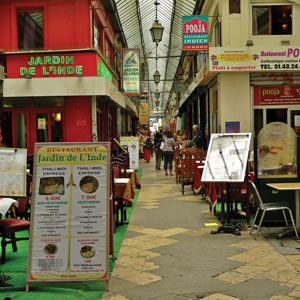Quiz, Fruit & Tree Girls, Mayors, Madam's & Mother's Museums, Little India, Books
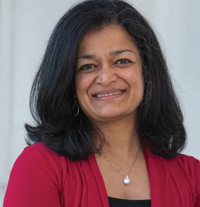
WHO, WHAT, WHERE, WHEN, & WHY
1. Incoming House Representative Pramila Jayapal, who will serve as Senior Whip for the
House Democrats and Vice Chair for the Congressional Progressive caucus, is also joining the influential
House Judiciary committee. From which city was Congresswoman Jayapal elected?
(A) Seattle (B) Chicago (C) Atlanta (D) Boston
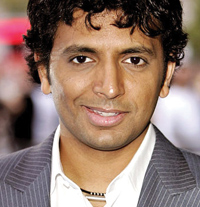
2. Eleven Little Indians, filmmaker M. Night Shyamalan’s latest offering, is a departure. This animated
comedy series focusing on an Indian family—one branch is successful, another comprises
new arrivals, and the third has gone off the rails—will be aired on which channel?
(A) NBC (B) HBO (C) ABC (D) FOX
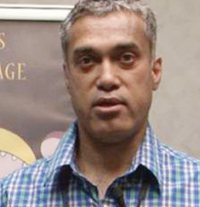
3. In a separate Oscar ceremony this year to honor technical achievement, Parag Havaldar won
an award, as did Kiran Bhat, who shared it with three others. They all worked to enhance the facial
performance capture system. Who is the only Indian to win two Academy Awards so far?
(A) Mira Nair (B) A. R. Rahman (C) Gulzar (D) Ismail Merchant
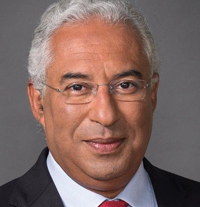
4. “I am very proud for visiting my father’s land as a Prime Minister, in particular as the first
Prime Minister of Indian origin,” said Antonio Costa when he went to India recently to meet PM
Modi and visit Goa, where he has an ancestral connection. Where does Costa serve as the PM?
(A) Portugal (B) Angola (C) Mozambique (D) Cape Verde
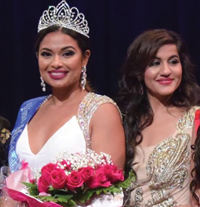
5. Madhu Valli was chosen from 52 finalists to become Miss India USA 2016. Karina Kohli, who
had been Miss India USA 2015, went on to win the Miss India Worldwide 2016 title. Atlantan Sarita
Pattnaik also participated in the annual pageant. Which 2016 title did she win?
(A)Teen India USA (B) Mrs. India USA (C) Miss India (D) Mrs. India Worldwide
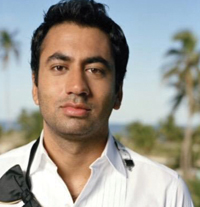
6. On FOX’s MasterChef Celebrity Showdown, where winners donate their prize money to a
nonprofit organization, actor Kal Penn—who used the featured ingredient beer to make halibut
with chipotle aioli—defeated actress Cheryl Hines. To which cause did he give the money?
(A) Sudanese (B) Palestinian (C) Tibetan (D) Haitian
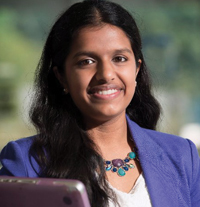
7. Sweta Prabhakaran and Manasa Hari Bhimaraju were recognized not once but twice by the
Obamas. Manasa, who watched a movie with them, is a former White House Science Fair participant.
Sweta, appointed to the inaugural Student Advisory Board, drew attention for what?
(A) Spelling (B) Poetry (C) Coding (D) Science

8. Salman Khan topped the 2016 list of Forbes India Celebrity 100. Deepika Padukone, the
highest-ranked woman, was number 6. In the ‘fame’ list, she was number 8 while Virat Kohli was
number 1. Who was the only other woman to make it to the top 10 of both these lists?
(A) Katrina Kaif (B) Sonakshi Sinha (C) Priyanka Chopra (D) Jacqueline Fernandez
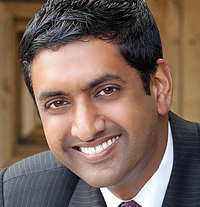
9. Ro Khanna, Pramila Jayapal, Raja Krishnamoorthi, and Ami Bera were elected to the House
of Representatives, and Kamala Harris to the Senate. Harris and Bera are from California, Krishnamoorthi
from Illinois, and Jayapal from the state of Washington. What about Khanna?
(A) California (B) Ohio (C) New York (D) Texas
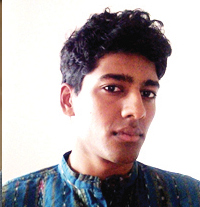
10. Anuk Arudpragasam is completing his Ph.D. in philosophy at Columbia University. But he
has already found success as a novelist. His debut, The Story of a Brief Marriage, picked as one of the
best novels of 2016 by several publications, focuses on a civil war in which country?
(A) Syria (B) Pakistan (C) Sri Lanka (D) Nepal
[Answers are at the bottom of this page.]
O | O | O | O | O | O |
FRUIT AND TREE GIRLS
|
|
|
|
One is called the Fruit Girl, the other could be the Tree Girl. Like so many others, they’re doing their bit to make the planet a better place. Given the effects of global warming, is it any wonder that water shortages and droughts are becoming more common, causing immense hardship? Which brings us to Kiara Nirghin, the 16-year-old South African Indian who won the $50,000 grand prize at the 2016 Google Science Fair for a fruit-inspired innovation that tackles drought. She found that the humble orange peel, with some assistance from the avocado peel, could be used to create a biodegradable superabsorbent polymer (SAP) that absorbs and retains large amounts of water (about 300 times the weight), keeping the soil fertile even in bleak conditions. Moreover, this citrus peel product doesn’t cost much, making it practical for ordinary farmers.
U.A.E. resident Kehkashan Basu, also 16, who planted her first tree when she was eight, won the 2016 International Children’s Peace Prize for her fight against environmental degradation. She founded Green Hope at the age of 12, led several cleanup and climate justice campaigns, and even wrote a book titled The Tree of Hope. Her organization—whose membership has grown to over 1,000 young people, including about 300 activists in the U.A.E.—has planted more than 5,000 trees worldwide. This youth-run program, which raises funds independently, has so far spread to 10 nations outside the U.A.E., including the U.S. and India.
Ꙭ $ ←↑→↓↔↕↖↗↘↙ ₵ Ꙭ
MAYORS, NOW AND THEN
|
Savita Vaidhyanathan |
If being a mayor is a stepping stone for higher things in America’s political hierarchy, then Savita Vaidhyanathan is doing well. She was in the spotlight recently for becoming the mayor of Cupertino, California, where she has lived for two decades and worked as a math teacher and commercial bank officer. “I’ve had several congratulatory messages saying that I’m the first woman mayor of Indian origin,” she said. This is certainly true if we’re referring to known cities with decent-size populations—and Cupertino, of course, qualifies as one. With a population estimate that’s well over 60,000, Cupertino, home to the Apple headquarters in the San Francisco Bay Area, almost made it to the top 10 list of the nation’s most affluent cities with a population over 50,000. It ranked number 11. Not only is the population well-educated, but the majority is Asian American, with Chinese-Americans forming the dominant group.
|
Pradeep Gupta |
Now comes the quibble. In 2015, Attorney Vini Elizabeth Samuel, also from India, became the mayor of Montesano, Washington, where she has lived for two decades. Naturally, one should note that its population is only about 4,000. Indian-American men, too, have been mayors, the most recent example being Pradeep Gupta, who was sworn in as the mayor of South San Francisco City (population: over 66,000). Former mayors include Satyendra Singh Huja (Charlottesville, VA); John Abraham and Mohammed Hameeduddin (Teaneck, NJ); Kashmir Gill (Yuba City, CA); Bala Srinivas (Hollywood Park, Texas); and Sam Singh (East Lansing, MI).
O V O V O V O V O V O V O V
MADAME’S AND MOTHER’S MUSEUMS
|
|
Indian film buffs hoping to share selfies from a wax museum don’t have to visit London’s Madame Tussauds. They can go to a new museum opening in Delhi, or visit the Mother’s Wax Museum in Kolkata. As the 23rd Madame Tussauds, the Delhi museum will showcase over 50 statues, of which about 60 percent are national figures and the rest global. “This is a close up of the Madame Tussauds image in wax in Delhi…gosh I thought it was my photograph,” tweeted Amitabh Bachchan. Fans will recall that this famed actor became the first living Asian to have a statue at the museum in London, where he was joined by the waxed versions of Aishwarya Rai, Shah Rukh Khan, Katrina Kaif, and a few others. You’ll also meet figures like Mahatma Gandhi, Sachin Tendulkar, and Indira Gandhi, soon to be joined by Narendra Modi. Meanwhile, the new Indian museum will get a waxed statue of Arvind Kejriwal, the mercurial chief minister of Delhi.
What about heroes with strong regional roots? Well, there’s the example of Kolkata, whose Mother’s Wax Museum opened in New Town a few years ago. Said to be India’s first—and so far, only—indigenous wax museum, it features local luminaries who have attracted wide admiration. The museum includes the poet Rabindranath Tagore (an obvious choice), scientist A.J.C. Bose, cricket player Sourav Ganguly, composer Manna Dey, and singer Kishore Kumar. Also present is the outlier Diego Maradona—not surprising, given the craze for football (i.e. soccer) in Kolkata.
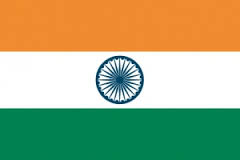
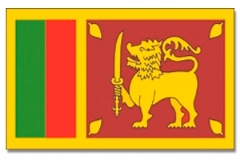
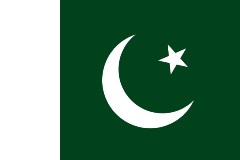
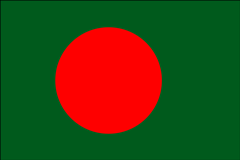
LITTLE INDIA OR LITTLE SOUTH ASIA?
|
|
When you’re in Paris, you’ll probably head to the area around Gare du Nord, the northern rail station, if you have a sudden craving for the sights, flavors, and smells of Little India. Or you may go to the 10th arrondissement and check out the historic Passage Brady, which like other immigrant enclaves will provide a respite from the more popular and sanitized tourist sites. You’ll be able to satisfy your hunger with subcontinental cuisine at this covered market, which was built by M. Brady in 1828 and is today one of 20 such markets still in existence. However, Little South Asia would be a more accurate name for these ethnic islands, where you’ll see not only Indian immigrants but large numbers of Sri Lankans, Pakistanis, and Bangladeshis as well.
For sure, when it comes to subcontinental enclaves, no European nation can beat Britain. In fact, as the story goes, many South Asian migrants settled in the area around Gare du Nord only because they couldn’t board the London-bound train at the station. While the “curry houses” of these and other ethnic hubs appeal to aficionados of Indian cuisine, what’s the origin of the so-called curry? The word is believed to have its roots in South India, though archeologists Arunima Kashyap and Steve Weber turned to a North Indian town, Farmana, where the Harappan civilization flourished 4,000 years ago. Using modern techniques on ancient utensils and tools, they did a starch analysis to figure out what was perhaps the first curry, or proto-curry. The ingredients they uncovered: aubergine (eggplant), ginger, turmeric, and salt. Seems familiar.
& & & & & & & & & &
BOOK MATTERS
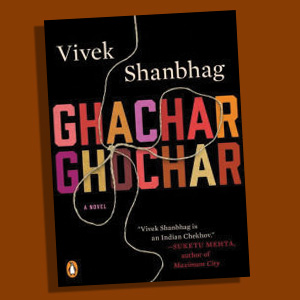
Fiction in Indian languages gets short shrift, largely because good English translations are scarce. Otherwise, the Nobel Prize in literature wouldn’t have been so elusive for India—and the world would have known that Indian writing in English is just the visible part of an immense iceberg. Hence, Vivek Shanbhag’s Ghachar Ghochar (Penguin) is a cause for celebration. This short, delectable Kannada novel manages to capture, in Srinath Perur’s deft translation, a broader Indian story through the multihued prism of one middle-class joint family, whose shifting fortunes in the neoliberal era can be summed up by the phrase ghachar ghochar, which means “tangled beyond repair.” “In Shanbhag’s hands,” Nilanjana Roy notes, “the Indian family is revealed in layers; as one layer peels away, what lies beneath is left raw and exposed.”
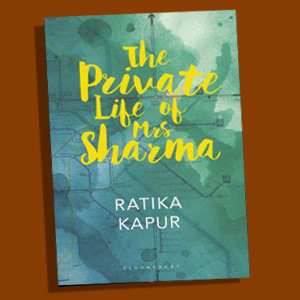
Moving on to fiction in English, do you want to be in an unreliable narrator’s head as she takes you on another Indian journey? Ratika Kapur’s The Private Life of Mrs. Sharma (Bloomsbury) is your ticket. Tradition and modernity intersect, but they run on parallel lines as well. With her husband away for work in Dubai, the self-deceiving Mrs. Sharma begins an affair with a younger man, whom she meets—appropriately enough—in the Delhi Metro, a contemporary showpiece in the bowels of the city. Kapur, whose earlier novel was longlisted for the Man Asia Literary Prize, “has fashioned a memorably double-sided character for a novel that, like a gathering storm, changes before your eyes from soft light to enveloping darkness,” according to Sam Sacks.
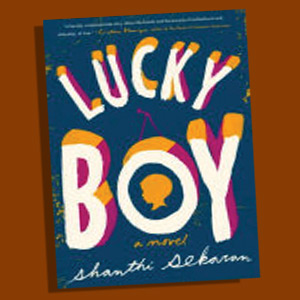
Shanthi Sekaran’s Lucky Boy (G.B. Putnam’s Sons) is tailor-made for our times. The protagonist, comfortably ensconced in Silicon Valley, is childless—but she becomes a foster mother when Soli, a Mexican migrant, ends up in detention. A tragic struggle ensues in what Simon Van Booy describes as “a gripping, obsessive, character-driven narrative of sacrifice and identity— where the lives of two women become forever tangled in the roots of motherhood.”
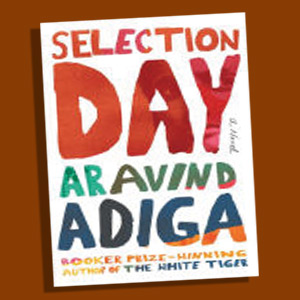
Hard hitter Aravind Adiga is back with Selection Day (Scribner), which should be a treat for cricket lovers, especially if they enjoyed Adiga’s Man Booker Prize-winning The White Tiger. As we saw in that novel, corruption—a ‘c’ that draws a lot of attention in India, along with cricket and cinema—takes center stage in the new work, too, with Adiga giving readers glimpses of the seedier side of a sacred/wicked game that enthralls Indians as much as it baffles Americans. The story is propelled by two young brothers—they’re outstanding players but there’s also rivalry—and their controlling, conniving father. “What this novel offers is the sound of a serious and nervy writer working at near the top of his form,” writes Dwight Garner. Who knows, filmmaker Danny Boyle of Slumdog Millionaire fame may return and adapt this novel for another kinetic movie set in the slums of Mumbai.

If you missed Sunjeev Sahota’s The Year of the Runaways (Viking), shortlisted for the 2015 Man Booker Prize, you can pick up the paperback being released this month. No topic could be more resonant than his in the era of Brexit, mass migration, and populism. Three Indian men leading precarious lives in an English town share a house that seems just as unstable—and thrown into the mix, in a layered story that unfolds over one eventful year, is a mysterious ‘visa’ wife. As Salman Rushdie notes, “all you can do is surrender, happily, to its power.”
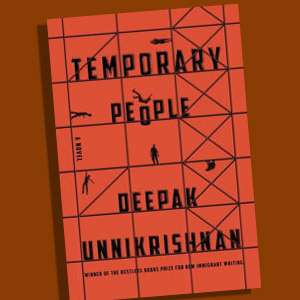
Coming soon is Deepak Unnikrishnan’s Temporary People (Restless Books), which won the publisher’s inaugural prize for New Immigrant Writing. Although a resident of the U.S., where he has studied and taught, Unnikrishnan now lives and works in Abu Dhabi. The people he writes about in his debut novel are the Arabian Peninsula’s South Asian migrants, who, often feeling trapped between two worlds, lead makeshift lives as guest workers in one land while thinking of the families they left behind in the other. In this novel, “the accoutrements of migration—languages, body parts, passports, losses, wounds, communities of strangers—are packed and carried along with ordinary luggage, blurring the real and the unreal with exquisite skill,” says Ru Freeman.
Finally, in these early months of 2017, readers can also look forward to Mohsin Hamid’s Exit West (Riverhead) and V. Sanjay Kumar’s The Third Squad (Akashic), among other novels.
>>>>>>>>>>>>>>
[Answers to the quiz: 1=(A). 2 = (D). 3= (B). 4 = (A). 5 = (B). 6 = (B). 7 = (C). 8 = (C). 9 = (A). 10 = (C).]
Enjoyed reading Khabar magazine? Subscribe to Khabar and get a full digital copy of this Indian-American community magazine.
blog comments powered by Disqus




